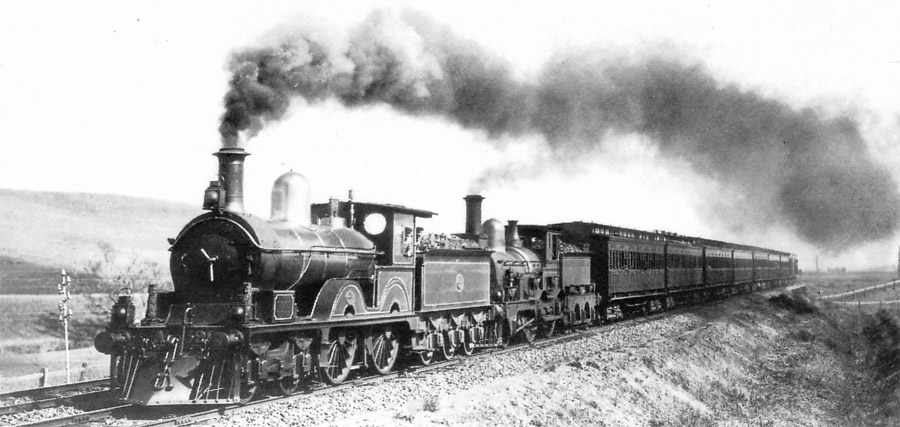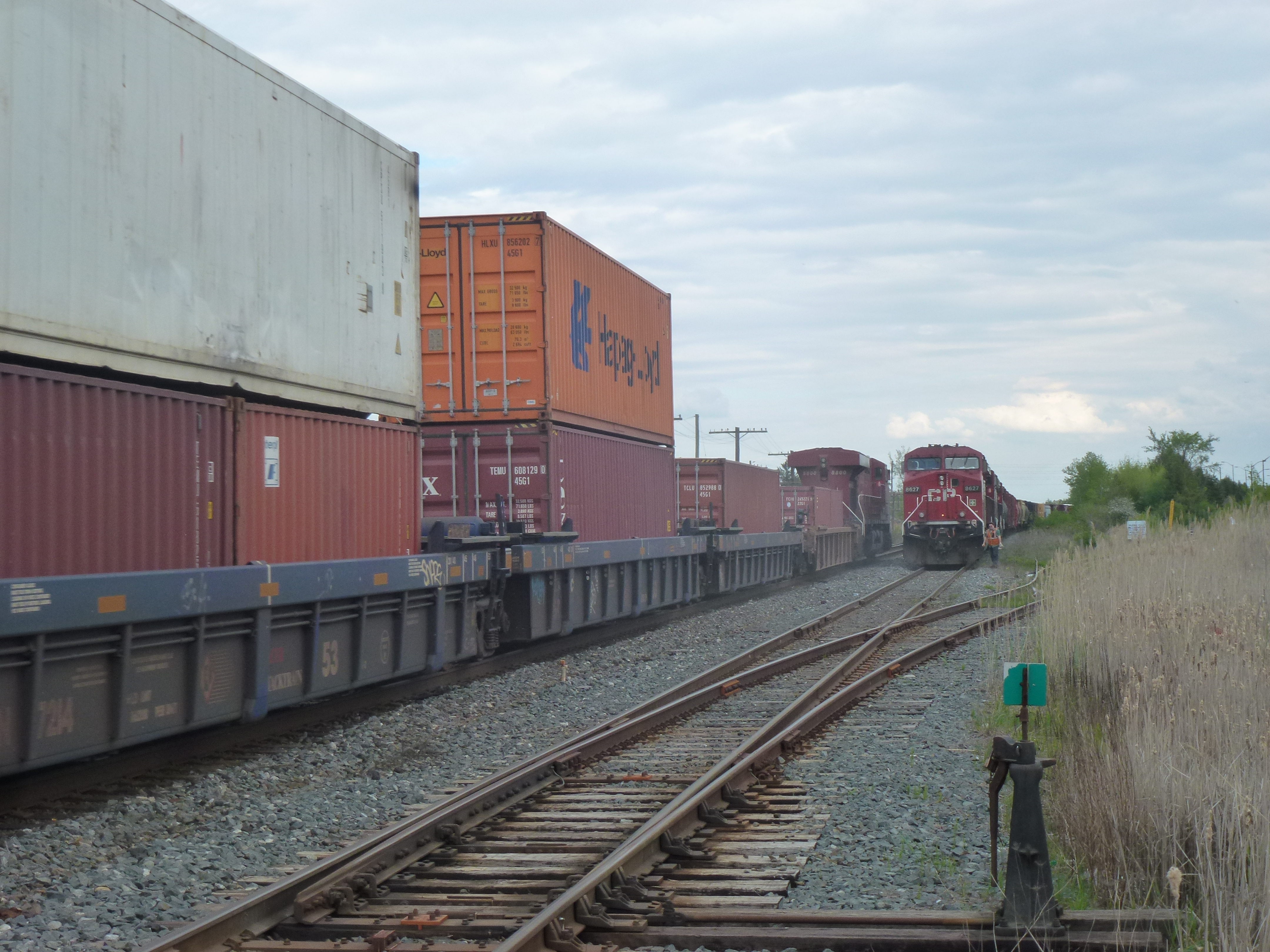|
Newport–Sunshine Railway Line
The Newport–Sunshine line is a railway line in the western suburbs of Melbourne, Australia. Linking Newport station on the Werribee line to Sunshine station on the Sunbury line, it is primarily a freight line with no overhead wires, passenger stations or platforms but ''The Overland'' passenger service between Melbourne and Adelaide also uses this route. History The line was opened on 24 September 1887 to permit freight trains from the western and northern areas of Victoria (Australia) to access the then important port at Williamstown, Victoria. It was 4.29 miles long and is also known as the Brooklyn Loop line, for the former intermediate signal box on the line. Initially, it was not possible for trains to run from Brooklyn into Melbourne via Tottenham. A connection from the line to Tottenham Yard opened on 15 February 1965. Between Newport and Brooklyn, the line was provided with bidirectional double-track lines. By the 1930s, a number of private sidings were opened o ... [...More Info...] [...Related Items...] OR: [Wikipedia] [Google] [Baidu] |
Single Track (rail)
A single-track railway is a railway where trains traveling in both directions share the same track. Single track is usually found on lesser-used rail lines, often branch lines, where the level of traffic is not high enough to justify the cost of constructing and maintaining a second track. Advantages and disadvantages Single track is significantly cheaper to build and maintain, but has operational and safety disadvantages. For example, a single-track line that takes 15 minutes to travel through would have capacity for only two trains per hour in each direction safely. By contrast, a double track with signal boxes four minutes apart can allow up to 15 trains per hour in each direction safely, provided all the trains travel at the same speed. This hindrance on the capacity of a single track may be partly overcome by making the track one-way on alternate days. Long freight trains are a problem if the passing stretches are not long enough. Other disadvantages include the ... [...More Info...] [...Related Items...] OR: [Wikipedia] [Google] [Baidu] |
Williamstown, Victoria
Williamstown is a suburb in Melbourne, Victoria (state), Victoria, Australia, south-west of Melbourne's Melbourne central business district, Central Business District, located within the City of Hobsons Bay Local government areas of Victoria, local government area. Williamstown recorded a population of 14,407 at the 2021 Australian census, 2021 census. History Indigenous history Indigenous Australians occupied the area long before maritime activities shaped the modern historical development of Williamstown. The Yalukit-willam clan of the Kulin nation were the first people to call Hobsons Bay home. They roamed the thin coastal strip from Werribee to Williamstown/Hobsons Bay. The Yalukit-willam were one clan in a language group known as the Bunurong, which included six clans along the coast from the Werribee River, across the Mornington Peninsula, Western Port Bay to Wilsons Promontory. The Yalukit-willam referred to the Williamstown area as "koort-boork-boork", a term meaning ... [...More Info...] [...Related Items...] OR: [Wikipedia] [Google] [Baidu] |
Railway Lines In Melbourne
Rail transport (also known as train transport) is a means of transport using wheeled vehicles running in tracks, which usually consist of two parallel steel rails. Rail transport is one of the two primary means of land transport, next to road transport. It is used for about 8% of passenger and freight transport globally, thanks to its energy efficiency and potentially high speed.Rolling stock on rails generally encounters lower frictional resistance than rubber-tyred road vehicles, allowing rail cars to be coupled into longer trains. Power is usually provided by diesel or electric locomotives. While railway transport is capital-intensive and less flexible than road transport, it can carry heavy loads of passengers and cargo with greater energy efficiency and safety. Precursors of railways driven by human or animal power have existed since antiquity, but modern rail transport began with the invention of the steam locomotive in the United Kingdom at the beginning of the 19th ... [...More Info...] [...Related Items...] OR: [Wikipedia] [Google] [Baidu] |
West Gate Freeway
The West Gate Freeway is a major freeway in Melbourne, the busiest urban freeway and the busiest road in Australia, carrying upwards of 200,000 vehicles per day. It links Geelong (via the Princes Freeway) and Melbourne's western suburbs to central Melbourne and beyond. It is also a link between Melbourne and the west and linking industrial and residential areas west of the Yarra River with the city and port areas. The West Gate Bridge is a part of the freeway. It is a fully managed freeway with a complete 'Freeway Management System' that is dynamically linked and adaptive to the entire M1 corridor. This includes the 2008 re-design of a substantial section. Overall, the freeway has between 4-6 lanes in each direction, with a maximum of 12 lanes at one point in its width. Route The West Gate Freeway officially begins at the West Gate Interchange in Laverton North, with ramps to and from the Western Ring Road, Princes Freeway and Princes Highway (Geelong Road) and heads e ... [...More Info...] [...Related Items...] OR: [Wikipedia] [Google] [Baidu] |
Princes Highway
Princes Highway is a major road in Australia, extending from Sydney via Melbourne to Adelaide through the states of New South Wales, Victoria (Australia), Victoria and South Australia. It has a length of (along Highway 1) or via the former alignments of the highway, although these routes are slower and connections to the bypassed sections of the original route are poor in many cases. The highway follows the coastline for most of its length, and thus takes quite an indirect and lengthy route. For example, it is from Sydney to Melbourne on Highway 1 (Australia), Highway 1 as opposed to on the more direct Hume Highway (National Highway (Australia), National Highway 31), and from Melbourne to Adelaide compared to on the Western Highway, Victoria, Western and Dukes Highways (National Highway (Australia), National Highway 8). Because of the rural nature and lower traffic volumes over much of its length, Princes Highway is a more scenic and leisurely route than the main highway ... [...More Info...] [...Related Items...] OR: [Wikipedia] [Google] [Baidu] |
Brooklyn Railway Station
Brooklyn is a borough of New York City located at the westernmost end of Long Island in the State of New York. Formerly an independent city, the borough is coextensive with Kings County, one of twelve original counties established under English rule in 1683 in what was then the Province of New York. As of the 2020 United States census, the population stood at 2,736,074, making it the most populous of the five boroughs of New York City, and the most populous county in the state.Table 2: Population, Land Area, and Population Density by County, New York State - 2020 |
Western Standard Gauge Line
The Western standard gauge railway line is a standard-gauge railway line in western Victoria, Australia. Completed in 1995, it forms part of the Melbourne–Adelaide rail corridor and serves as the principal interstate rail link between Victoria and the western states. The line replaced a number of former broad gauge routes which were gauge converted, and today sees both intrastate and interstate freight traffic, as well as the twice weekly (in each direction) ''The Overland'' passenger service. Major towns on the route include Geelong, Ararat, Horsham and Dimboola. History The first inter-capital link between Melbourne and South Australia was completed in 1887 when the Victorian Railways line was extended to Serviceton on the state border. Known as the Serviceton line, it passed westward from Melbourne through Geelong, Ballarat, Ararat, Stawell, Horsham and Dimboola. In 1889, the direct Melbourne–Ballarat route was opened. In the 1970s, most interstate lines in Au ... [...More Info...] [...Related Items...] OR: [Wikipedia] [Google] [Baidu] |
North East Railway Line
The North East railway line is a railway line in Victoria (Australia), Victoria, Australia. The line runs from Southern Cross railway station on the western edge of the Melbourne Melbourne City Centre, central business district to Albury railway station in the border settlement of Albury-Wodonga, serving the cities of Wangaratta and Seymour, Victoria, Seymour, and smaller towns in northeastern Victoria. The railway line is both standard gauge and 5 ft 3 in gauge railways, broad gauge. It originally was built as broad gauge the entire length, but another track was built as standard gauge between and , with construction of the standard gauge track commencing in November 1959 and completed in January 1962, completing the Sydney–Melbourne rail corridor, Sydney-Melbourne standard gauge railway. Between 2008 and 2010, the broad gauge track between Seymour and Albury was finally converted to be the line's second standard gauge track. The original section between Southern Cross and ... [...More Info...] [...Related Items...] OR: [Wikipedia] [Google] [Baidu] |
South Kensington–West Footscray Railway Line
South is one of the cardinal directions or compass points. The direction is the opposite of north and is perpendicular to both west and east. Etymology The word ''south'' comes from Old English ''sūþ'', from earlier Proto-Germanic ''*sunþaz'' ("south"), possibly related to the same Proto-Indo-European root that the word ''sun'' derived from. Some languages describe south in the same way, from the fact that it is the direction of the sun at noon (in the Northern Hemisphere), like Latin meridies 'noon, south' (from medius 'middle' + dies 'day', ), while others describe south as the right-hand side of the rising sun, like Biblical Hebrew תֵּימָן teiman 'south' from יָמִין yamin 'right', Aramaic תַּימנַא taymna from יָמִין yamin 'right' and Syriac ܬܰܝܡܢܳܐ taymna from ܝܰܡܝܺܢܳܐ yamina (hence the name of Yemen, the land to the south/right of the Levant). South is sometimes abbreviated as S. Navigation By convention, the ''bottom or down-f ... [...More Info...] [...Related Items...] OR: [Wikipedia] [Google] [Baidu] |
Track Gauge Conversion
Track gauge conversion is the changing of one railway track gauge (the distance between the running rails) to another. In general, requirements depend on whether the conversion is from a wider gauge to a narrower gauge or vice versa, on how the rail vehicles can be modified to accommodate a track gauge conversion, and on whether the gauge conversion is manual or automated. Sleepers If tracks are converted to a narrower gauge, the existing timber sleepers (ties) may be used. However, replacement is required if the conversion is to a significantly wider gauge. Some sleepers may be long enough to accommodate the fittings of both existing and alternative gauges. Wooden sleepers are suitable for conversion because they can be drilled for the repositioned rail spikes. Concrete sleepers are unsuitable for conversion. Concrete sleepers may be cast with alternative gauge fittings in place, an example being those used during the conversion of the Melbourne–Adelaide railway from to . ... [...More Info...] [...Related Items...] OR: [Wikipedia] [Google] [Baidu] |
Rail Siding
In rail terminology, a siding is a low-speed track section distinct from a running line or through route such as a main line, branch line, or spur. It may connect to through track or to other sidings at either end. Sidings often have lighter rails, meant for lower speed or less heavy traffic, and few, if any, signals. Sidings connected at both ends to a running line are commonly known as loops; those not so connected may be referred to as single-ended or dead-end sidings, or (if short) stubs. Functions Sidings may be used for marshalling (classifying), stabling, storing, loading, and unloading rail vehicles. Common sidings store stationary rolling stock, especially for loading and unloading. Industrial sidings (also known as spurs) go to factories, mines, quarries, wharves, warehouses, some of them are essentially links to industrial railways. Such sidings can sometimes be found at stations for public use; in American usage these are referred to as team tracks (after th ... [...More Info...] [...Related Items...] OR: [Wikipedia] [Google] [Baidu] |







